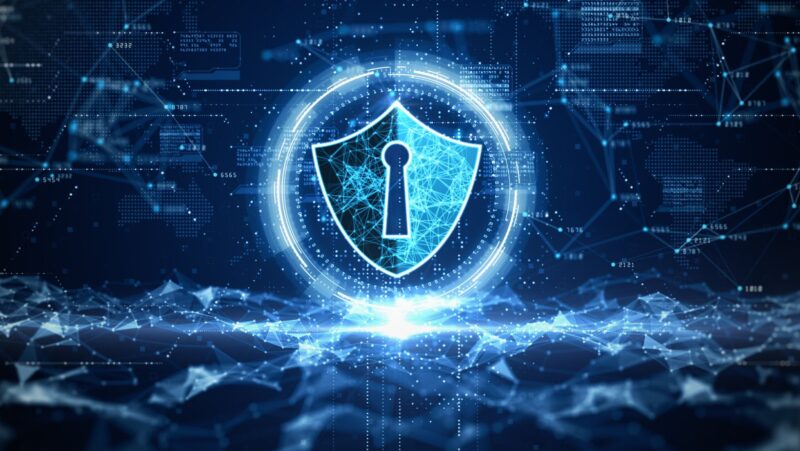
Which is a Best Practice for Protecting Controlled Unclassified Information
Are you concerned about the security of controlled unclassified information (CUI)? If so, you’re not alone. Protecting CUI is a crucial aspect of maintaining confidentiality and preventing unauthorized access to sensitive data. In this article, I’ll discuss the best practices for safeguarding CUI and highlight the risks associated with not properly protecting it.
One of the key best practices for protecting CUI is implementing robust security measures. This includes establishing strong access controls, such as user authentication protocols and encryption methods, to ensure that only authorized individuals can access sensitive information. Additionally, regular monitoring and auditing of system activities can help detect any potential breaches or suspicious activities promptly.
Failure to properly protect CUI can have severe consequences. Not only does it expose sensitive information to potential adversaries or hackers, but it can also lead to legal ramifications and damage an organization’s reputation. The risks associated with inadequate protection include data breaches, intellectual property theft, financial loss, regulatory non-compliance penalties, and even national security implications.
In summary, safeguarding controlled unclassified information is of utmost importance in today’s digital age. By following best practices for protection and understanding the risks involved in neglecting proper safeguards, organizations can mitigate potential threats and maintain the integrity and confidentiality of their sensitive data.
What exactly is Controlled Unclassified Information (CUI)?
Well, let me break it down for you. CUI refers to any information that has been designated by the United States government as requiring safeguarding or dissemination controls. It’s a broad category that includes sensitive but unclassified information, such as intellectual property, proprietary business information, and personally identifiable information (PII).
Now, you might be wondering why CUI needs protection in the first place. The answer lies in the potential risks associated with not properly protecting this type of information. When CUI falls into the wrong hands, it can have serious consequences for individuals, organizations, and even national security.
One major risk of not adequately protecting CUI is the potential for unauthorized access or disclosure. This could result in financial losses, reputational damage, and legal liabilities for businesses and individuals alike. Additionally, there’s also the risk of intellectual property theft or espionage when valuable trade secrets or sensitive research data are compromised.
But it doesn’t stop there – inadequate protection of CUI can also lead to identity theft and fraud. When PII is exposed, criminals can use that information to impersonate others or carry out fraudulent activities. This puts individuals at risk of financial loss and personal harm.
To put things into perspective, let me share a staggering statistic with you: According to a report by Verizon Data Breach Investigations Report (DBIR), 29% of all breaches involved stolen credentials in 2020 alone. This highlights just how crucial it is to properly protect CUI and prevent unauthorized access.
In conclusion, understanding what Controlled Unclassified Information (CUI) entails is essential for grasping the importance of its proper protection. Failing to safeguard this sensitive data can expose individuals and organizations to various risks such as unauthorized access, intellectual property theft, identity theft, and fraud. Therefore, implementing best practices for protecting CUI should be a top priority for both individuals and businesses.

Risks of Not Properly Protecting CUI
When it comes to safeguarding Controlled Unclassified Information (CUI), the risks of not properly protecting it can be severe and wide-ranging. Ignoring or neglecting the necessary security measures can have detrimental consequences for organizations, individuals, and even national security. Here are some key risks that arise from failing to adequately protect CUI:
- Unauthorized Access: One of the most significant dangers of not properly securing CUI is the risk of unauthorized access. Without robust controls in place, sensitive information becomes vulnerable to exploitation by malicious actors. This could include hackers gaining access to proprietary data, competitors getting hold of trade secrets, or foreign adversaries infiltrating critical infrastructure systems.
- Data Breaches: Insufficient protection measures increase the likelihood of data breaches, which can have far-reaching implications both financially and reputationally. When CUI falls into the wrong hands due to weak security protocols, it can lead to substantial financial losses through legal penalties, litigation costs, and damage control efforts. Moreover, companies may suffer irreparable harm to their brand image if customers lose trust in their ability to safeguard sensitive information.
- Regulatory Non-Compliance: Inadequate protection for CUI puts organizations at risk of non-compliance with various regulatory frameworks governing data privacy and security. Depending on the industry and geographical location, entities handling CUI may be subject to stringent compliance requirements such as GDPR (General Data Protection Regulation) or HIPAA (Health Insurance Portability and Accountability Act). Failure to meet these obligations can result in hefty fines and sanctions.
- Intellectual Property Theft: Organizations dealing with proprietary information face a heightened risk of intellectual property theft when they do not prioritize proper protection for CUI. The loss or compromise of valuable intellectual property can stifle innovation and give competitors an unfair advantage in the market.
- Damage to National Security: Certain types of CUI are critical for national security, such as defense-related information or government intelligence. Failing to adequately protect such data can have severe consequences for a country’s security, potentially compromising military operations, diplomatic relations, and counterintelligence efforts.










